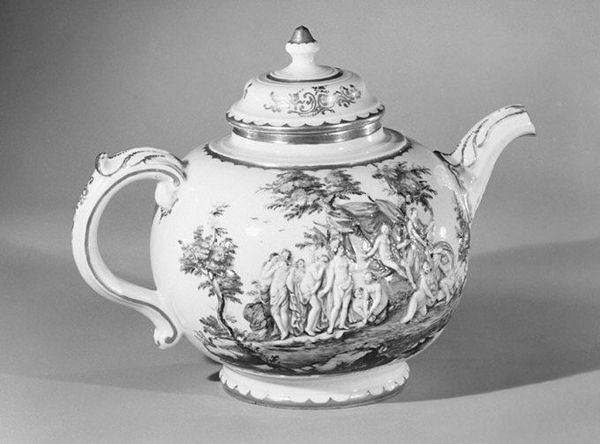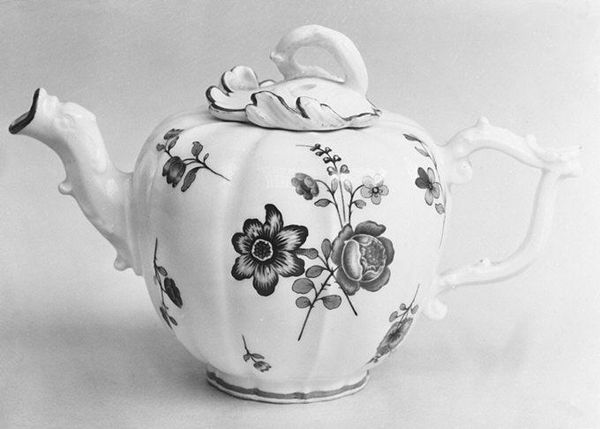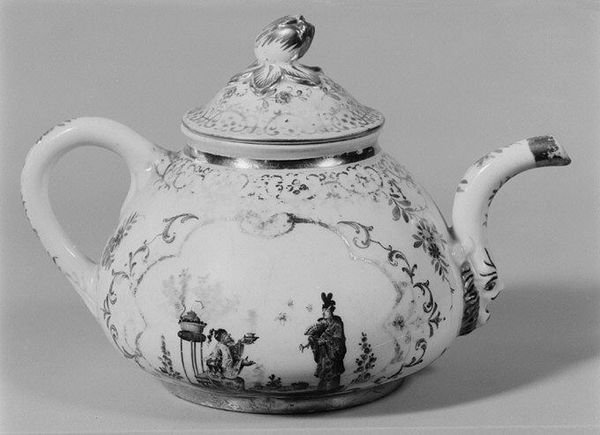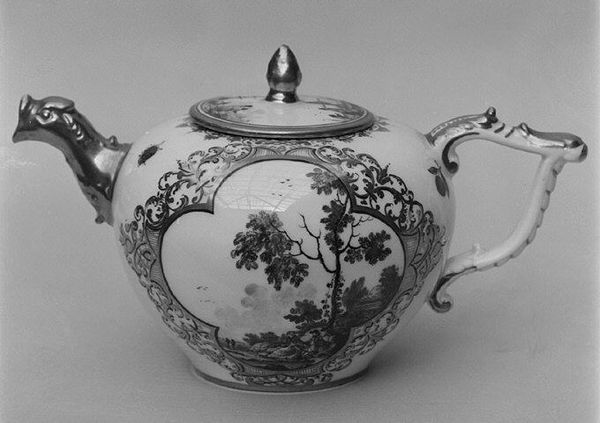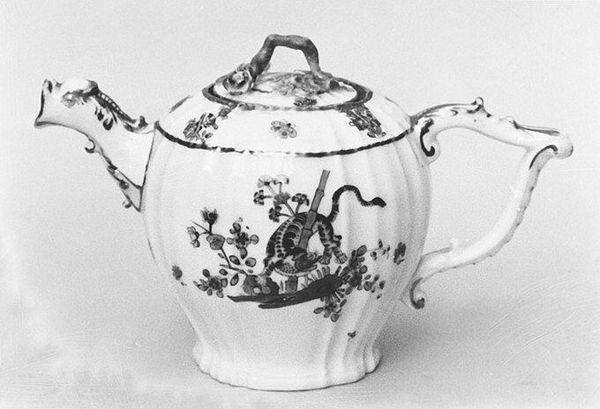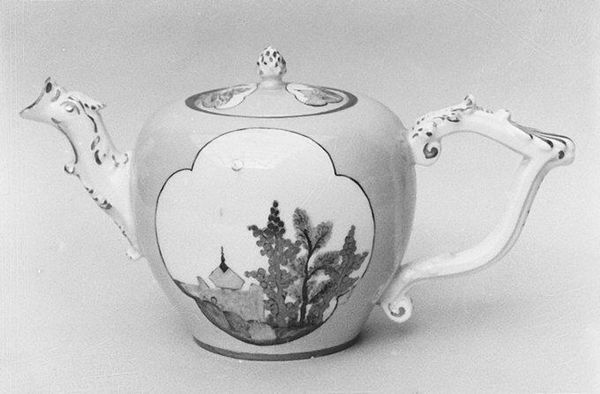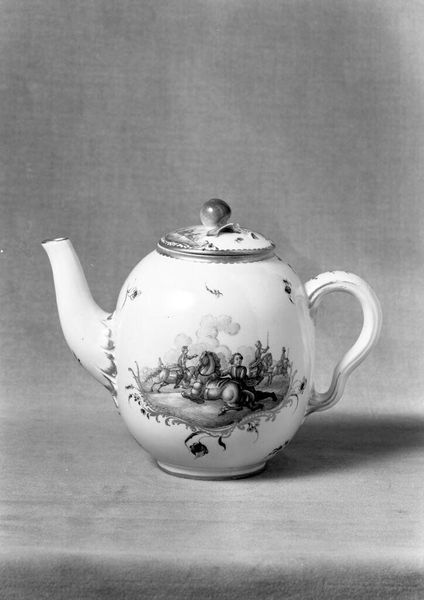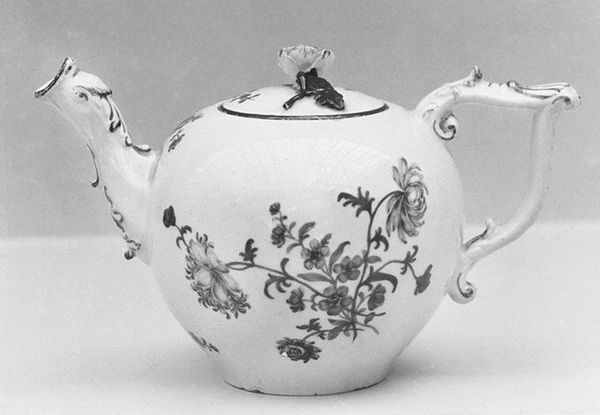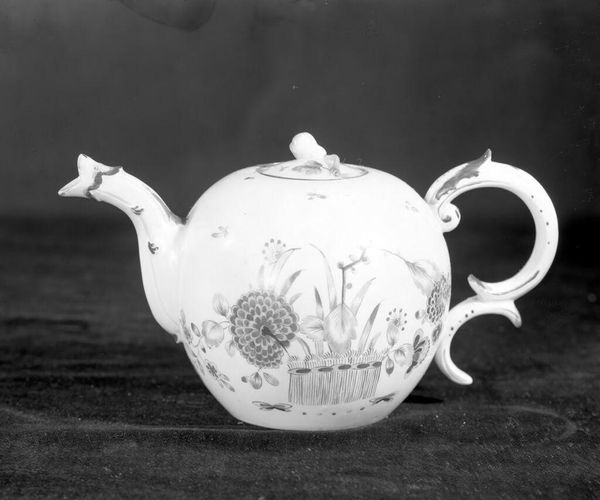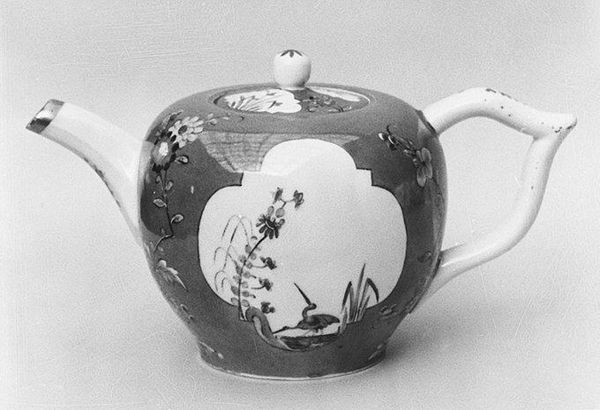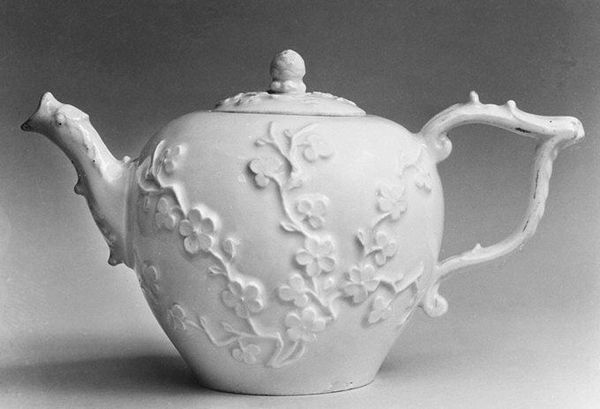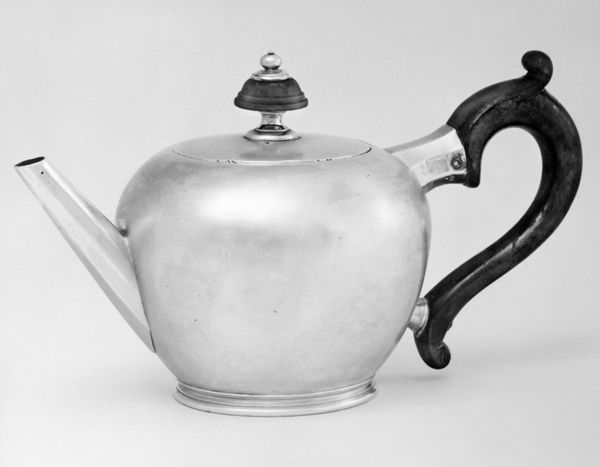
painting, ceramic, porcelain, sculpture
#
painting
#
landscape
#
ceramic
#
porcelain
#
sculpture
#
decorative-art
#
miniature
#
rococo
Dimensions: 4 × 7 1/4 in. (10.2 × 18.4 cm)
Copyright: Public Domain
Curator: Today, we're examining a Teapot, crafted circa 1730-1740 by the Meissen Manufactory. It’s currently housed here at the Metropolitan Museum of Art. The porcelain form, augmented with painted decoration, is an exquisite example of Rococo design. Editor: Gosh, it’s quite enchanting. My first thought is this isn't just a teapot. It’s a tiny porcelain canvas telling tales of leisurely boat trips on serene, painted waters. It brings to mind a bygone era of tea parties by the lake. Curator: Indeed. The composition, from a formal standpoint, presents a harmonious interplay between the vessel’s form and the painted landscapes. The landscape scenes, executed in subtle monochrome, adhere strictly to established conventions of the period. The narrative within these panels—the vessels on the water—introduce both depth and dynamic movement. Editor: Dynamic's a perfect word! It feels as if I could practically smell the lake as a fresh, unexpected breeze ripples across it. Porcelain's not the obvious medium for landscape, but this little gem captures nature’s capricious elegance wonderfully. Like a landscape artist working with watercolor and ink on rice paper. It almost hums with possibilities, ready for gossip or daydreaming! Curator: And one might argue the form enhances the landscape, that the curving surface offers a viewing context, lending the painting another dimension. A narrative uncontained by a square boundary; the curvature almost insists on sequential viewing! The scenes become little windows into a leisurely existence, one reflective of the era’s increasing global awareness brought by international trade and colonialism. Editor: So much expressed in a teacup— or a teapot, in this case! Its curvaceous forms almost whisper about those far-off adventures, that cultural exchange you describe... you're so right, it is reflective of what that perfect cuppa signifies, maybe something precious or life-affirming. Curator: Yes, the design elements, which incorporate landscape, miniature sculpture, and decorative painting, create a sophisticated example of eighteenth-century aesthetics. It embodies the playful and ornate tendencies representative of Rococo artistry. Editor: What a beautiful example of everyday art infused with sophistication! Holding this teapot must’ve been a real experience, like cradling a landscape, holding history and the promise of cozy chats in the palm of your hand. Curator: It has been quite insightful, observing how technical precision and artistic fancy blend in such a functional object, and one can view our world through aesthetic, political or utilitarian concerns. Thank you. Editor: And for me, it's been just joyful thinking about how we imbue simple things with the power of narrative and the quiet murmur of human connection. Thanks to you too.
Comments
No comments
Be the first to comment and join the conversation on the ultimate creative platform.
